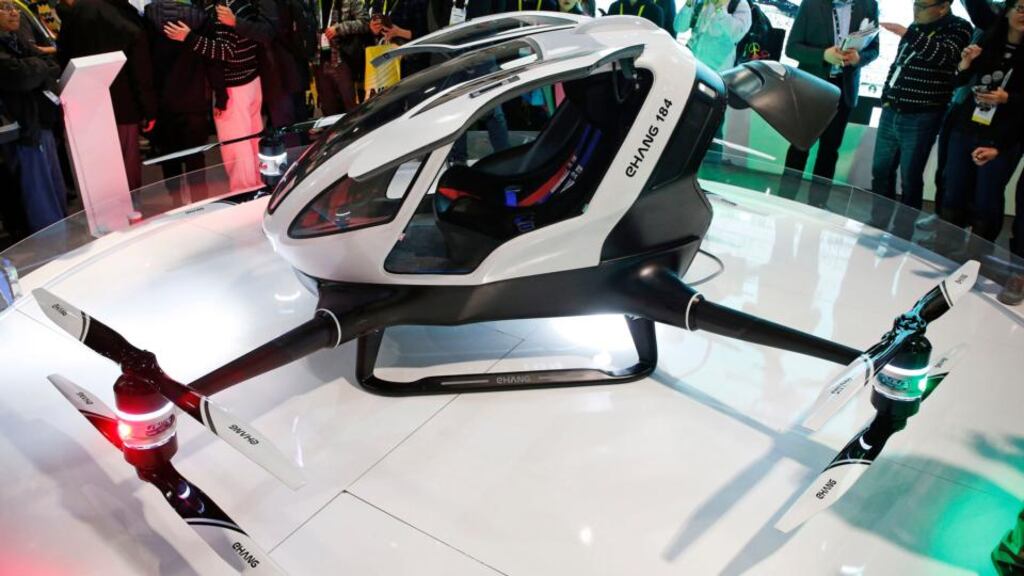‘Life is too short for traffic.” Poorly-set traffic lights, few encouragements to keep traffic flowing, hardly any red-light camera enforcements, and sheer volume of traffic all conspire to make driving in Irish municipal areas more inefficient than perhaps it could be. The particulate pollution and the immense waste of kinetic energy caused by frequently stop-starting thousands of multi-tonne vehicles, each in mid-journey, damages our environment and our health every day.
Is there a better way? We need real automobiles: automatic machines for transport.
Volvo, a brand built on safety, announced earlier this month that it was working with the ride-hailing company Uber to develop self-driving cars. General Motors – owners of the Opel brand – and Uber's competitor Lyft made a similar announcement in May. General Motors also announced its intention to acquire Cruise Automation, a San Francisco-based start-up developing autonomous-driving technology. Google is putting together an executive team to bring its self-driving car mainstream, most recently with an ex Airbnb executive, and ex-TripAdvisor chief executive, joining this month.
Self-driving articulated lorries
Meanwhile, Daimler is testing self-driving articulated lorries in Germany and Nevada in motorway conditions. In April, the European Truck Platooning Challenge had six teams of three heavy trucks each converging on Rotterdam from across the continent. The lead truck of each triple set was driven normally, with the other two in the convoy autonomously following the lead truck.
The transition to fully autonomous vehicles will no doubt take some time. Regulatory issues, including insurance liability, and market acceptance by consumers require patient changing of attitude and legacy. In the interim, autonomous technology is spinning off improvements in human-driven cars, including self-parking, lane following and proximity-warning systems.
The most complex challenge to autonomous driving is coexistence with humans. Like human drivers, autonomous vehicles have to monitor and react to unexpected behaviour from other human drivers, other road users and pedestrians. The switch over to a world of only autonomous vehicles would be much simpler if humans would keep out of the way.
But there is an alternative: not many humans fly machines, particularly at low altitude. Autonomously-flown vehicles may ultimately provide a better solution as automobiles – automatic machines for transport. Not many humans have the skills or desire to learn to fly, but there is no reason at all that computers cannot be developed to do so. Furthermore, autonomously-flown vehicles for urban transport would have to contend with relatively few human-flown aircraft, and there would be no erratic human pedestrians.
Autonomous minicopter
In June, the Chinese company Ehang showed their single-seater autonomous minicopter prototype. The passenger straps in, touches in a destination, and the machine does the rest: take-off, navigation and collision avoidance, and landing. Currently it can carry just a single passenger for 25 minutes at 100km/h.
Larry Page, Google co-founder and now Alphabet chief executive, is rumoured to be trialling autonomously flown vehicles in his Zee-Aero start-up. He is also an investor in KittyHawk, a Zee-Aero competitor. Terrafugia in Massachusetts is also developing a flying car with both autonomous and driven modes.
Intriguingly, Nasa has published a slide deck identifying Silicon Valley as an ideal test bed for autonomously flown air taxis, due to heavy ground traffic and long commutes, wealth and propensity to adopt new technology.
In particular it identified public land at the cloverleaf interchanges of freeways – of which there are many in the Bay Area – as ideal helipad sites for vertical take-off taxis. These locations already have traffic noise, and approach and departure paths would avoid flying over private property at low altitude. Autonomous air taxis would then use the existing road network to reach the nearest helipad.
Irish weather
Is there an Irish opportunity to lead global innovation for autonomously flown urban air taxis? The main difference between the skies over Silicon Valley and Ireland is the weather. Fine sunshine and calm wind are not the norm in Ireland, and high wind and heavy rain are not unusual. An autonomous flight system which could cope with Irish weather would more likely to be of global interest than one which is limited to the usual near-perfect flight conditions of the Bay Area.
Developing an autonomous flight system which could safely navigate in all weather conditions, night flying as well as day, and obey all flight regulations and directives in both controlled and uncontrolled airspace, would be a considerable undertaking. It could then be applied to multiple air vehicle types. In particular, it could first be developed for drones, obeying all air-safety regulations, before being brought to human carrying air taxis.
I believe a group of Irish-led engineers and entrepreneurs could take a global lead in using high-end computing and sensors to develop the world’s first all-weather autonomous flight system, targeting future urban transport applications in controlled airspace, using drones in the first instance as a means to the objective. An Irish X-prize anyone ?












